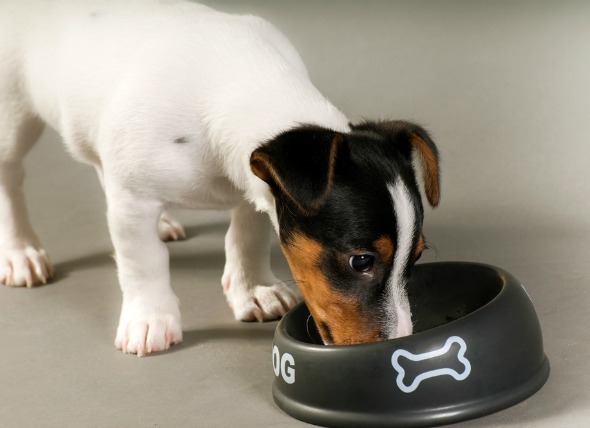
The epithelium is the cellular covering of all of the internal and external surfaces of the body, protecting the organs, inner cavities and outer surfaces of the body in a continuous layer of multi-layered tissue. The squamous epithelium is a type of epithelium that consists of the outer layer of flat, scale-like cells, which are called squamous cells. A squamous cell carcinoma of the lung is a type of metastasizing tumor that arises from the squamous epithelium in lungs.
This is a rare form of primary tumor with high metastatic potential, especially if it reaches the regional lymph nodes.
You will need to give your veterinarian a thorough history of your dog's health and onset of symptoms. A standard physical examination will include routine laboratory tests, with a complete blood count, biochemical profiles, and urinalysis. The results of the blood tests may reveal an increased number of leukocytes or white blood cells (leukocytosis) in the blood, indicative of an invasion that the body is fighting against. Biochemistry profiles in some patients may show abnormally high levels of calcium (hypercalcemia).
Another diagnostic tool that your veterinarian can use to ascertain your dog's condition is an endoscope, a minimally invasive tubular device that can be inserted into the body without having to perform surgery in order to view the tumor up close and to take fluid and tissue samples from within the lungs. These samples can then be sent to a veterinary pathologist for further evaluation. The results of this test usually provide an initial diagnosis. Your veterinarian will also take thoracic (chest) X-rays, which may show a single mass arising from a single focus. The trachea may appear to be displaced or compressed due to the presence of a mass, or tumor. In some patients a partial or complete airway obstruction may also be seen.
The only way to confirm a diagnosis of squamous cell carcinoma is to take a lung tissue sample (biopsy). This sample will be sent to a veterinary pathologist, who will cut into very small sections to examine under a microscope.
In most patients, surgery is required. After consultation with a veterinary oncologist, chemotherapy may be advised for your pet, especially if the presence of tumor cells is suspected. However, a complete resection of the affected lung lobe is often the only way to stop the spread of this highly metastatic cancer. Such an intervention will provide the best opportunity for long-term survival of the patient. If lymph node involvement is suspected, a sample will be taken from the lymph nodes. If the lymph nodes are involved, your veterinarian may remove them all to prevent further dissemination of cancerous cells. Chemotherapy may be given before or after the surgery.
Overall prognosis is very poor in affected animals and untreated animals may only survive for three months or less. Even with treatment, overall survival time generally is not more than several months. The decision to go forward with surgery or chemical therapy will be based on the actual prognosis. In some cases, end of life pain management may be in order.
Always seek advice and instructions from a veterinary oncologist before giving chemotherapy medications, as these drugs are highly toxic to human health. Chemotherapy medications have the possibility of toxic side effects, so your veterinarian will need to closely monitor your dog's stability, changing dosage amounts as necessary.
After surgery, you should expect your dog to feel sore. Your veterinarian will give you pain medication for your dog to help minimize discomfort, and you will need to set up a place in the house where your dog can rest comfortably and quietly, away from other pets, active children, and busy entryways. Trips outdoors for bladder and bowel relief should be kept short and easy for your dog to handle during the recovery period. Use pain medications with caution and follow all directions carefully; one of the most preventable accidents with pets is overdose of medication.
 Reduced Activity of the Stomach in Dogs
Gastric Stasis in Dogs
When the stomach is interr
Reduced Activity of the Stomach in Dogs
Gastric Stasis in Dogs
When the stomach is interr
 Involuntary Muscle Trembling in Dogs
Tremors in Dogs
Tremors are involuntary, rhythmic
Involuntary Muscle Trembling in Dogs
Tremors in Dogs
Tremors are involuntary, rhythmic
 Eyelash Disorders in Dogs
Trichiasis, Distichiasis, and Ectopic Cilia in Dogs
&nbs
Eyelash Disorders in Dogs
Trichiasis, Distichiasis, and Ectopic Cilia in Dogs
&nbs
 Blood Related Deficiencies in Dogs
Pancytopenia in Dogs
The term pancytopenia does n
Blood Related Deficiencies in Dogs
Pancytopenia in Dogs
The term pancytopenia does n
 Joint Cartilage Erosion in Dogs
Erosive, Immune-Mediated Polyarthritis in Dogs
Er
Joint Cartilage Erosion in Dogs
Erosive, Immune-Mediated Polyarthritis in Dogs
Er
Copyright © 2005-2016 Pet Information All Rights Reserved
Contact us: www162date@outlook.com